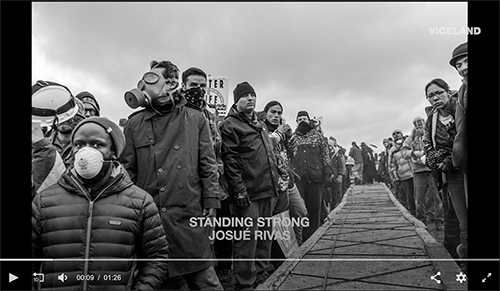This weekly post has everything you need for completing this week’s self-paced content and readings, plus an outline at the end for what’s covered during class meetings. This week we’re looking at what’s sometimes called the “colonial lens” and the ways photography is related to global and cultural power structures.
Colonial Perspective
Start this week by reading the essay by Teju Cole on the reading list — “When the Camera Was a Weapon of Imperialism. (And When It Still Is.)” — which narrates how many of themes we’ve previously discussed are related to colonial conquest.
This was one of the repeated interactions between imperial powers and the populations that they sought to control: The dominant power decided that everything had to be seen and cataloged, a task for which photography was perfectly suited. Under the giant umbrella of colonialism, nothing would be allowed to remain hidden from the imperial authorities.
This is a rich essay that weaves together photos from many different sources. It is worthwhile to look up the projects he describes to see the images.
Review & Reflection
- How can a photograph show disrespect for a
- What is alarming to the people photographed about the “King of Ejayboo” photograph? How is this photo connected to the effects of British colonialism?
- What does it mean that photography will “continue to illustrate, without condemning, how the powerful dominate the less powerful”?
- The author says photos of violence and pain tend to be different when the people depicted are considered “foreign.” How does this relate to the other reading about bodies?
- Do you think people should have a right to be unseen? How are historic photos taken by colonial powers similar or different from modern visual surveillance?
Indigenous Photography in North America
There’s a very good chance you’ve seen a photograph by Edward S. Curtis, a photographer who took on an ambitious project to photograph the American West and Native people in North America during the late 1800s and early 1900s. He became interested in this during a trip to Seattle in 1895. His work was influential but not widely seen during his lifetime, but since then his photographs have become what many people imagine when they picture “Native Americans” in a broad way.
Watch this video from the Smithsonian Institution, which introduces Curtis and give some insight about his photography process and, in some cases, darkroom manipulations:
Next, watch this video featuring curators at the Portland Art Museum about how Curtis’ legacy “casts a long shadow.”
Review & Reflection
- Why is it a problem if people in the U.S. primarily think of very old photographs when thinking of portraits of Native people?
- How do photographs that remove clocks or show the backs of Native people riding horses toward the sunset perpetuate stereotypes?
- How do you think modern museums and textbooks should use Curtis’ work?
In this video, Daniella Zalcman talks about a recent project to photograph indigenous people in Canada who are survivors of Canada’s Indian Residential Schools.
You can view more photos from this project here, and see related essays and work here. It is not required reading, but Teju Cole has an excellent essay that addresses the Curtis legacy and mentions Zalcman’s project.
Review & Reflection
- What are the challenges of taking on a photojournalism story that is largely about the effects of the past?
- Why did she decide to abandon her original project and change to a new idea?
- Do you personally think the double-exposure or superimposed images technique is effective for telling this story?
Finally, watch this short interview with photographer Josué Rivas about the photographs he took in 2018 at the Standing Rock protest against the Dakota Access pipeline. It’s not embeddable, so you’ll need to click through and watch it on the Vice website.
For optional viewing, this TEDx video is a longer presentation from Rivas. It goes into a little more depth about his background and approach to photojournalism.
Review & Reflection
- Rivas says, “Indigenous folks are still here.” What does he mean and how does this relate to his photos displayed during this interview?
- Do you think it matters whether the photojournalists covering major news events like the Standing Rock protest are themselves indigenous?
Everyday Africa
One modern project that addresses historic power imbalances is Everyday Africa, which was started by two white, American photographers who recognized that their own work was contributing to a limited portrayal of African people and nations. The goal is distributing the visual power and showing life as it is, which is possible because smartphones have made it far easier for ordinary people to take photos and share them.
First, watch this news video that explains how the project got started:
Next, watch this interview with Peter DiCampo that goes a little deeper on his approach to photojournalism and this project:
Review & Reflection
- How do the photos from the Everyday Africa project differ from the photos seen in professional publications and photo contests?
- Why did this idea appeal to people worldwide? What is interesting about everyday life?
- How do you feel about two American journalists getting the credit for starting this project?
Monday
• Preview of week’s materials
Wednesday
• Photo discussion: Sense of Place
• Photo discussion: Light
Friday
• Discussion: power dynamics in photography
• Indigenous photography in the U.S.
• Review for quiz
